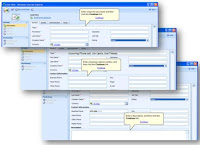 OnStar CIO, Jeff Liedel was recently profiled in InformationWeek. He asks, “How do you code for ‘user friendly’”? I developed my first mainstream business application which helped a group of Industrial Engineers to capture, analyze, and report data which they would collect on their consulting engagements to improve efficiencies in large businesses. I was appalled when some of them complained they not could figure out how to work my application. It was so obvious to ME.
OnStar CIO, Jeff Liedel was recently profiled in InformationWeek. He asks, “How do you code for ‘user friendly’”? I developed my first mainstream business application which helped a group of Industrial Engineers to capture, analyze, and report data which they would collect on their consulting engagements to improve efficiencies in large businesses. I was appalled when some of them complained they not could figure out how to work my application. It was so obvious to ME. The wonderful thing about people is that they come from all walks of life with endless experiences that shape their views and perspectives. An application's user interface (the visual screen display, menu’s, functions...) may make sense to one, but seem totally foreign to another.
I have a passion for learning and improving things. I love how technology is constantly shaping this. This is part of the reason that I became so committed to the SHO Technology. It allows a person who knows the application and business process to capture or record doing the job the right way. Using SHO Guide, this “script” may be distributed to everyone in the organization to complete the computer task correctly by guiding them step-by-step on the application they need to use to do their job. The formal name for this kind of learning is called “Performance Support.”
I have had a lot of fun creating various scripts to help guide friends and family members with various outcomes they desired on their applications. Now, if only I could figure out how to guide large organizations to find SHO Guide. When you have that one figured out, call me.
